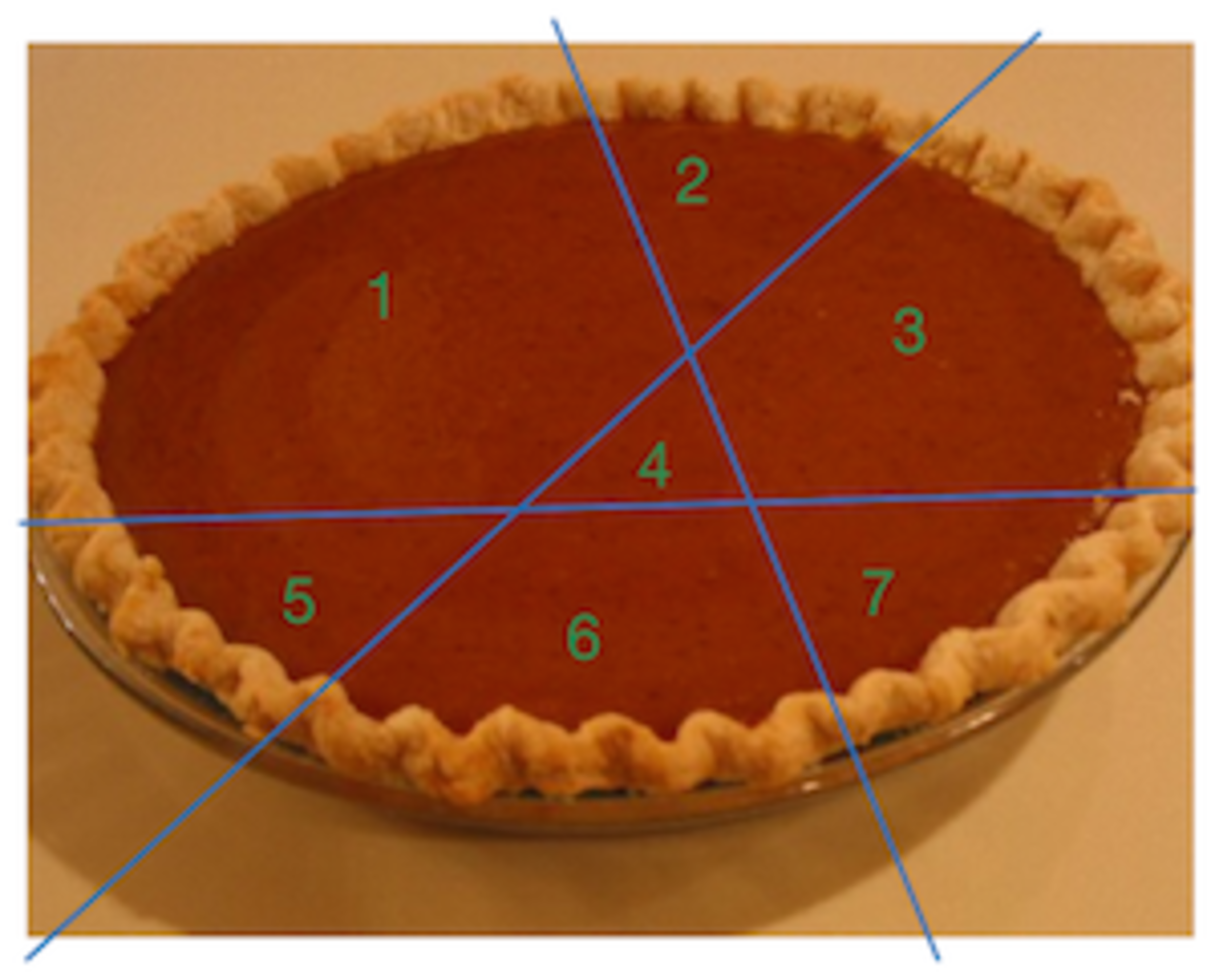Inspired by Vatsalya Tandon

We all know that to cut a (circular) pie,
1 cut gives us at most 2 pieces,
2 cuts give us at most 4 pieces,
3 cuts give us at most 7 pieces.
It is clear for 1 cut and 2 cuts, how we can get these pieces to be the same size.
Can we cut a circular pie into 7 equal pieces with 3 cuts?
If no, why not?
If yes, can we cut a circular pie into 11 equal pieces with 4 cuts?
This thought occurred to me as I was adding an image to Vatsalya's Problem.
No vote yet
1 vote
Easy Math Editor
This discussion board is a place to discuss our Daily Challenges and the math and science related to those challenges. Explanations are more than just a solution — they should explain the steps and thinking strategies that you used to obtain the solution. Comments should further the discussion of math and science.
When posting on Brilliant:
*italics*or_italics_**bold**or__bold__paragraph 1
paragraph 2
[example link](https://brilliant.org)> This is a quote# I indented these lines # 4 spaces, and now they show # up as a code block. print "hello world"\(...\)or\[...\]to ensure proper formatting.2 \times 32^{34}a_{i-1}\frac{2}{3}\sqrt{2}\sum_{i=1}^3\sin \theta\boxed{123}Comments
I suspect the answer is no, to either scenario.
In the 3 cut case, each chord would have to, independently, divide the circle into regions with a 3:4 area ratio. The chords would also have to be drawn so that an interior triangle is formed. The maximum area of this triangle given these conditions would, by symmetry, be less than one-seventh the area of the circle, (it comes out to roughly one-fifteenth).
In the 4 cut case, @Michael Mendrin proved for me here that a circle cannot be cut into 9 regions of equal area using 4 cuts, so I would assume that 10 or 11 regions of equal area are out of the question. (Using circular cuts we can achieve 9 regions of equal area, as shown here.)
Perhaps we could make the conjecture that the maximum number of regions of equal area that can be created using n cuts is 2n.